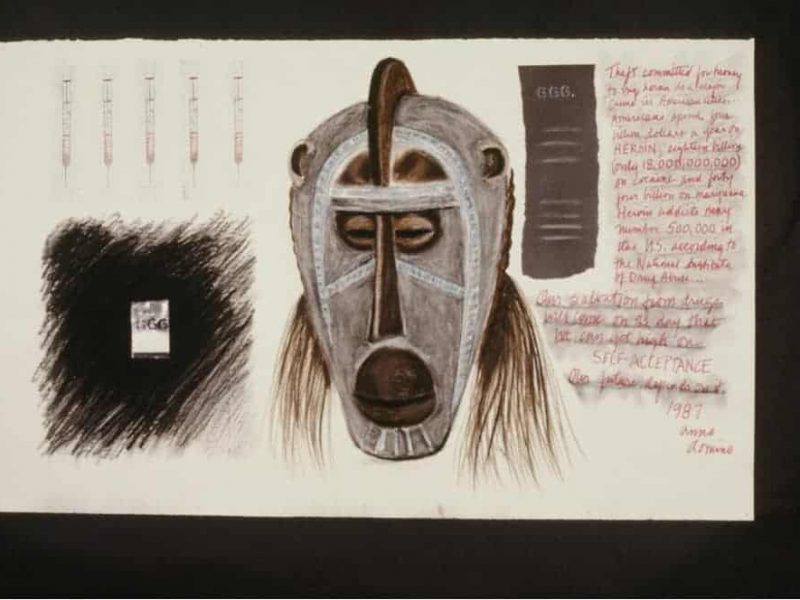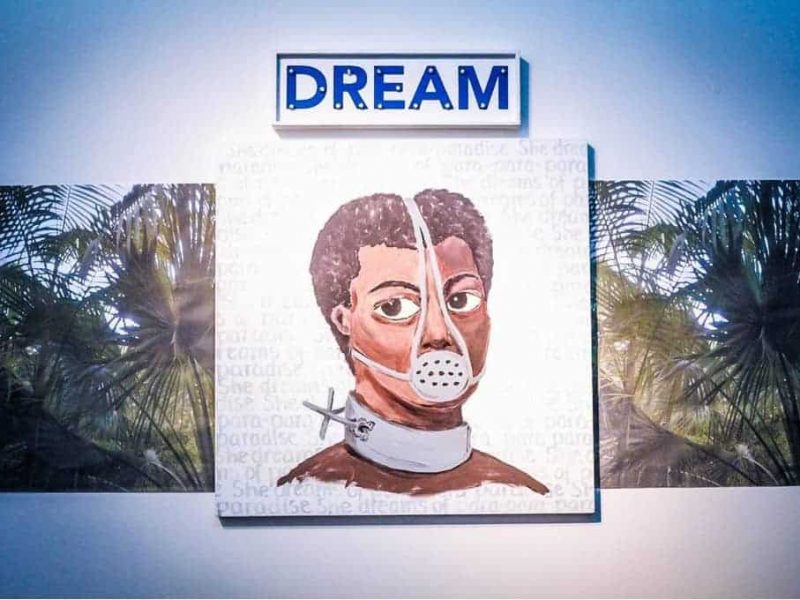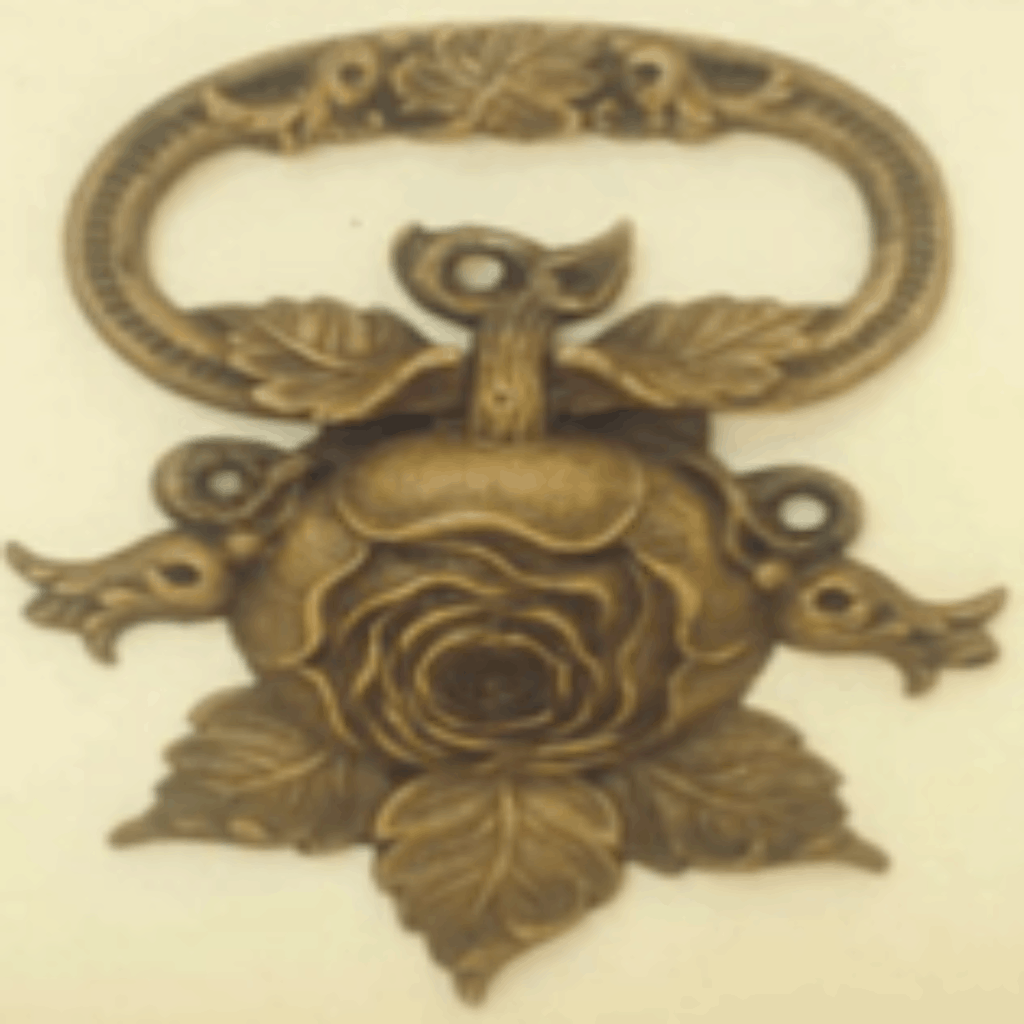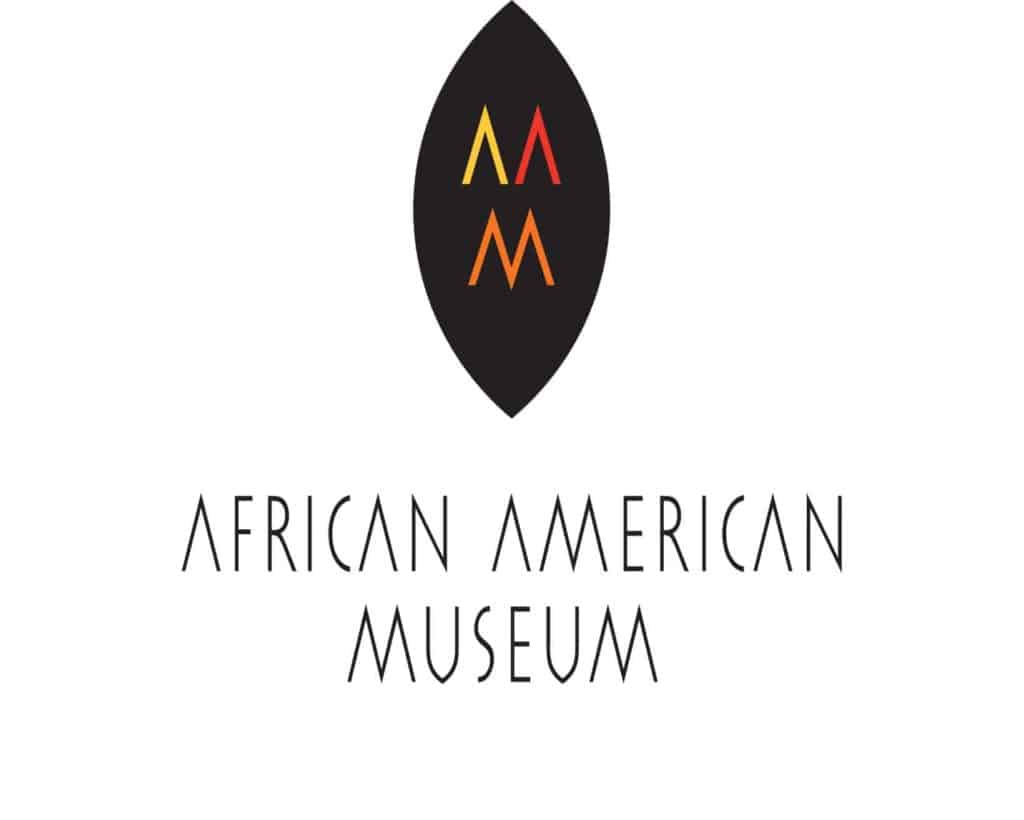New Exhibit
Vicki Meek: 3 Decades of Social Commentary



2020-2021
AAM Exhibition Schedule

(1885-1899)
Casket Handle
Ongoing │ FACING THE RISING SUN: FREEDMAN’S CEMETERY: PERMANENT EXHIBITION
Facing The Rising Sun presents the remnants of a once thriving North Dallas Community. Facing the Rising Sun contains photographs, found objects, and historical documents that provide an insight into a community called Freedman’s Town and later known as short North Dallas and now known as Uptown. Interactive video kiosks allow visitors to see and hear from the people who knew Freedman’s Town first-hand.

Trixie's Zinnios
Oil on canvas
Ongoing │ THE SOULS OF BLACK FOLK: SELECTIONS FROM THE BILLY R. ALLEN FOLK ART COLLECTION AND THE DECORATIVE ARTS COLLECTION
The AAM, Dallas has one of the largest collections of African American folk art in the country. The Billy R. Allen Folk Art Collection, named for a founding board member, has grown to include more than 500 objects. Dr. Warren and Sylvia Lowe of Lafayette, Louisiana, Sally Griffiths and Dr. Bobby Alexander of Dallas, Texas have been major contributors. Pieces from the collection are rotated, twice each year, in the Sam and Ruth Bussey Gallery. Artists include Clementine Hunter, Mose Tolliver, Reverend Johnnie Swearingen, David Butler, Sister Gertrude Morgan, and Isaac Smith to name a few.
The Decorative Arts Collection consists of objects as early as the late 18th century. Some items are an 1824 coverlet; five pieces crafted between 1840-1850 by the legendary North Carolina furniture maker, Thomas Day (1820-1860); an 1888 crazy quilt; an 1830 slave made desk from San Augustine, Texas; and ceramics by Carroll Harris Simms, Co-founder of the Texas Southern University Art Department and Sandy Besser African Basket Collection. Also included is a silver teaspoon made by Peter Bentzon (1783-1850).

Full size 78″ x 64″ x 84″

Tuesday, September 8, 2020 – Saturday, November 28, 2020 │ CONCEPTUAL MENAGERIE
Featuring works of art by guest artist, Randell Henry and works from the African American Museum’s Permanent Collection GEMS (Isaac Smith, Johannes Boekhoudt, and all other artists in Gems)
Conceptual Menagerie is a collection of abstract paintings and figurative sculptures that define the connection between two mediums of art. The utilization of color, texture, and composition are deliberate illustrations of how figurative and non-figurative objects come together.

Violence #2 - Self Hate, 1987
From the collection of African American Museum, Dallas
Thursday, October 22, 2020 – Monday, March 1, 2021 │ “VICKI MEEK: 3 DECADES OF SOCIAL COMMENTARY”
For 3 Decades Vicki Meek has created installations that critique, examine and comment on the African American experience in the United States, as well as her own reactions to social injustice, African American heroes and heroines and the African and African American aesthetic. Her work reflects the ideals developed during the Black Power Movement and the accompanying Black Arts Movement of the 1960s. Trained as a sculptor, she has idolized some of the leading icons of African American art such as Elizabeth Catlett, Jacob Lawrence and Romare Bearden. Her works reflect the influence of those icons as well as her own development as an artist over three decades. Curated by Dr. Lauren Cross of the University of North Texas, visitors will experience Vicki Meek’s genius of attacking issues in our society and forcing observers to react to the many challenging issues that confront all of us each day.

Thursday, November 12, 2020 – Saturday, February 13, 2021 │ HAIR STORY FEATURING ARTIST LASHONDA COOKS
Black hair has always been more than mere follicles: it’s an economy, physical, spiritual and political. Within this world, there are so many layers. This exhibit will attempt to explore a few. The myths of Black hair. The magic of Black hair. And the Black methods of hair. Myth dissects the misinformation that have been and continue to be spread. Magic explores the concoctions traditionally and currently used to woo the coils, curls and kinks into anything the heart desires. And methods to highlight the often forgotten invisible hands and beings behind the styles. My goal is to provide an immersive hair experience. I’ll be creating paintings featuring local Black women and their hair including portraits of my personal stylists, from my beautician grandmother to my current location as well as a portrait of the late great poet Rage Almighty whose poem on hair sparked the whole concept. I’m also tapping local creators to join me on the visual journey and am planning to include installations by the talented Ciara Bryant and Danielle Demetria, paintings by Art-Fro Kreationz and Youveline Creations, hair photography by FennixRai, video hairart and hairkus by NappyHairAffair’s Linda Jones.

Thursday, December 17, 2020 – Monday, May 10, 2021 │ CARROLL HARRIS SIMMS: NATIONAL BLACK ART COMPETITION AND EXHIBITION
This exhibition program was originally named the Biennial Southwest Black Art Competition and Exhibition. It was established in 1976 at the African American Museum. The purpose of this exhibition program is to expand the Museum’s distinguished fine art collection and to provide black artists a venue to display their work. In 1999, the African American Museum Board of Trustees renamed the Biennial Southwest Black Art Competition and Exhibition the Carroll Harris Simms National Black Art Competition and Exhibition. The competition and exhibition attract artists nationally of African American descent.

Thursday, March 4 – Saturday, June 5, 2021 │ DYNASTY: THE PECULIAR SEARCH FOR TOTALITY FEATURING ARTIST MISSY BURTON
Dynasty is a photographic series that explores the timeline of one family’s search for freedom. The series focuses on the fictional family of “Dada” (I Am Woman Series) and their determination to return their lineage to freedom after “Dada” was captured and forced into the institution of slavery. I hope that you will engage with the stories & images in such a way that it will cause you to ponder how many generations it would take for this family to regain their politically free status. I partnered with historian, Jamie Jenkins to bring a level of accuracy to each character’s story that make it so believable, you will think it’s real.

Thursday, March 18 – Saturday, July 24, 2021 │ TEARS: WEAPONIZED, DEVALUED AND RECONCILED?
An artistic examination of the tears black and white women cry and have cried today and in American history. It is a comparison and contrast of the value placed upon those tears and the faces down which they fall. The value of these tears, or the lack thereof, is an indicator of just how far we have to go toward fulfilling the vision of being a place where we all are created and valued as equals.

Thursday, March 25 – Saturday, July 24, 2021 │ CONFEDERATE CURRENCY: THE COLOR OF MONEY
This exhibition investigates the importance of slavery in the economy of the South. Artist John W. Jones has researched and documented over 126 images of slavery that were depicted on Confederate and Southern States money. The juxtaposition of the framed Confederate Currencies with the acrylic paintings inspired by the slave images on the currencies makes a very powerful statement on the contribution of enslaved Africans to the American economy. In these paintings, as John says, “history informs art, which in turn artfully reveals more history”

Thursday, June 24 – Saturday, September 25, 2021 │ BECOMING FEATURING ARTIST VALERIE GILLESPIE
“Becoming” is an aesthetic exploration of the truth and illusion behind the often times unfortunate actions that stem from human nature. Our skin is what binds us physically, yet separates us emotionally. Through the use of pigment and skin tone, a visual representation of the pain of being the other is portrayed in each piece through the lens of an African American mother. In strength and with ones emotions guarded, pain is oftentimes overlooked or ignored. The masks we wear daily contribute to the seclusion and loneliness of what it feels like to be Black in America. Becoming is a visual journey of the bold and beautiful elements that define African American women. It is this beauty that often creates the divide, but illuminates the magic that we possess.
